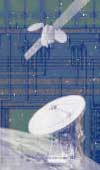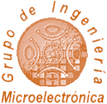
Mapa Web

Localización

Noticias

Info Santander

Gestión BD

|
| GIM>investigación>proyecto>FP7 IP 247999 COMPLE... |
| PROYECTO: |
| | FP7 IP 247999 COMPLEX |
| Seguir este link para ver las PUBLICACIONES dentro de este proyecto |
| |
| Título: | FP7 IP 247999 COMPLEX |
| Acrónimo: | |
| Financia: | CE |
| Socios: | OFFIS, STM-IT, STM-CN, Thales, GMV, Synopsys, EDALab, Magillem, Politecnico di Milano, Politecnico di Torino, IMEC, ECSI |
| Presupuesto: | 325588€ |
Año comienzo: | 2009 |
final: | 2013 |
| Director: | Eugenio Villar |
| Temas: |
Diseño y verificación de sistemas embebidos HW/SW
|
| Personas: |
Eugenio Villar
Fernando Herrera
Héctor Posadas
Sara Real
Pablo Pedro Sánchez
Pablo Peñil
Luis Diaz
|
| Descripción: | The primary scientific and technical objective of COMPLEX is to develop an innovative, highly efficient and productive design methodology and a holistic framework for iteratively exploring the design space of embedded HW/SW systems. This objective has a strategic dimension, since platform providers, EDA providers and system integrators would benefit from this framework likewise. These companies are seeking short to mid-term consolidation and growth of their market shares in business sectors such as telecom, consumer and automotive electronics, in which the European industry holds world-wide technical excellence and commercial leadership.
The R&D activities to be performed in COMPLEX will target new modelling and specification methodologies by using software like MDA design entry for system design as well as the integration of HW and SW timing and power estimation in efficient virtual system simulation, and also multi-objective design-space exploration under consideration of run-time management for power and performance optimizations. The innovative solutions will be fully worked out and their effectiveness assessed and demonstrated within the project.
|
|
|






